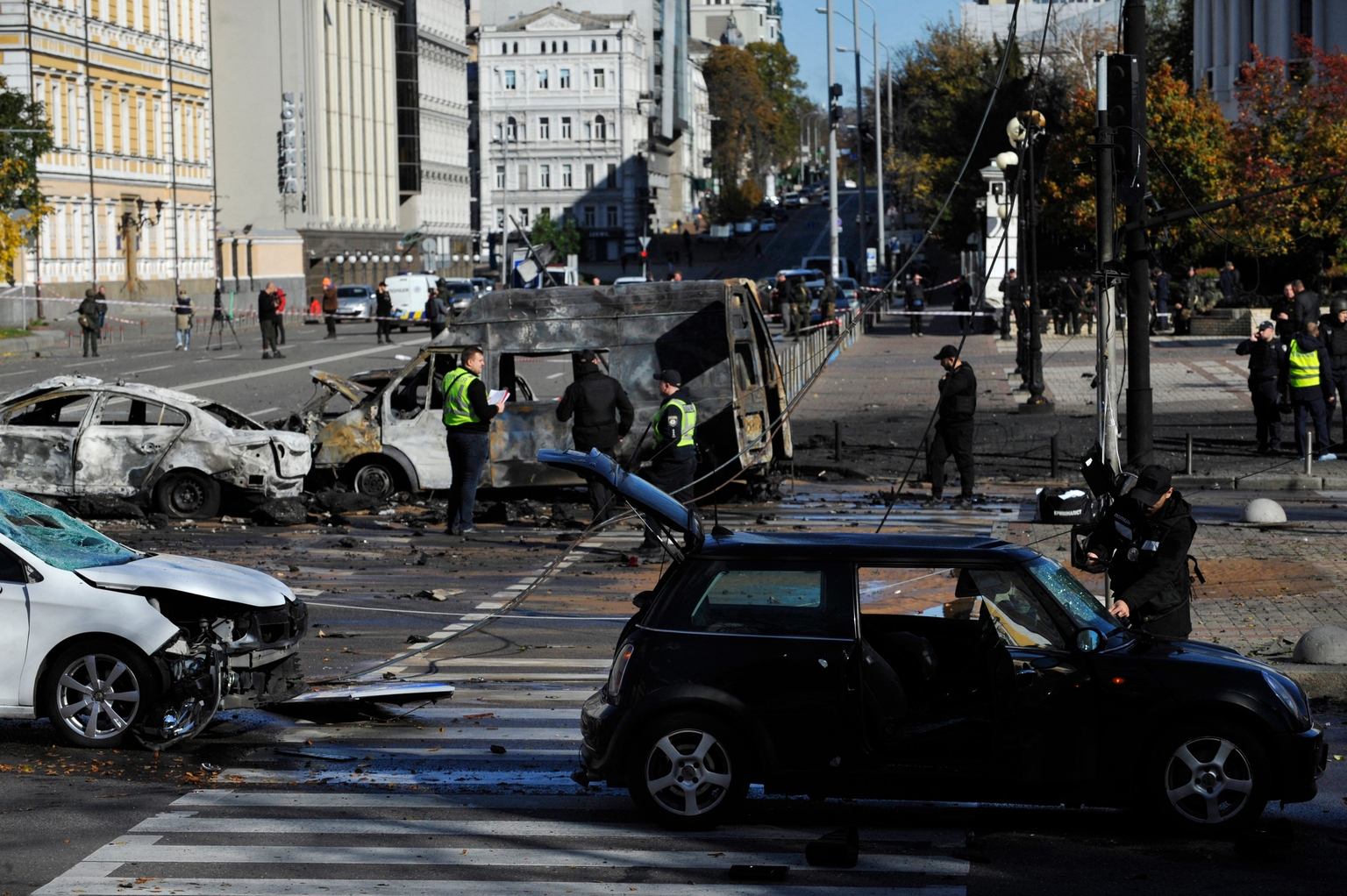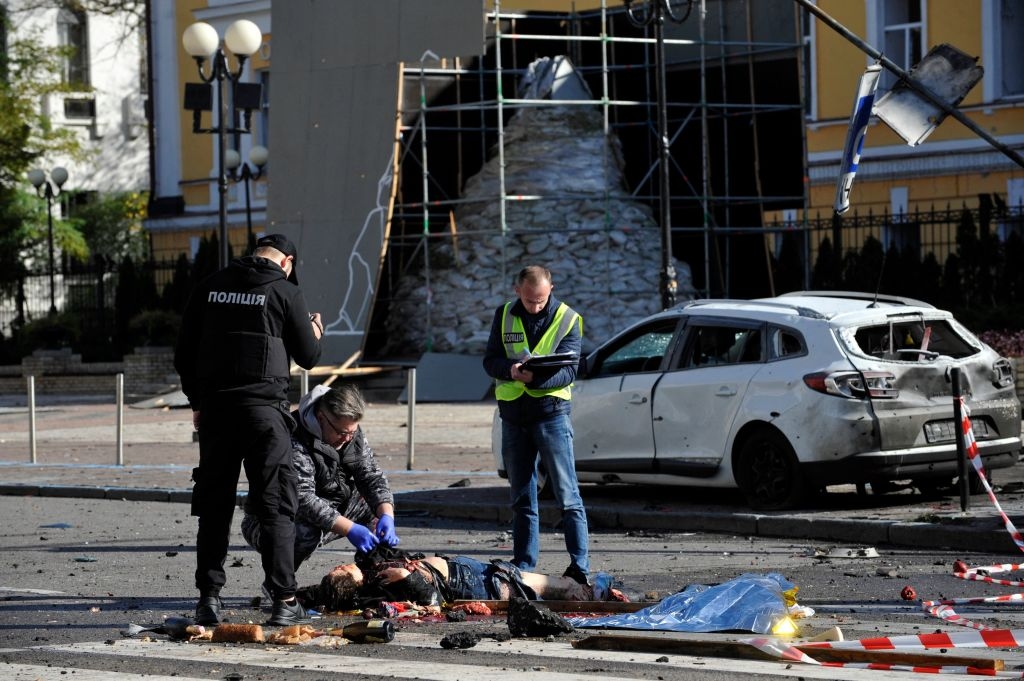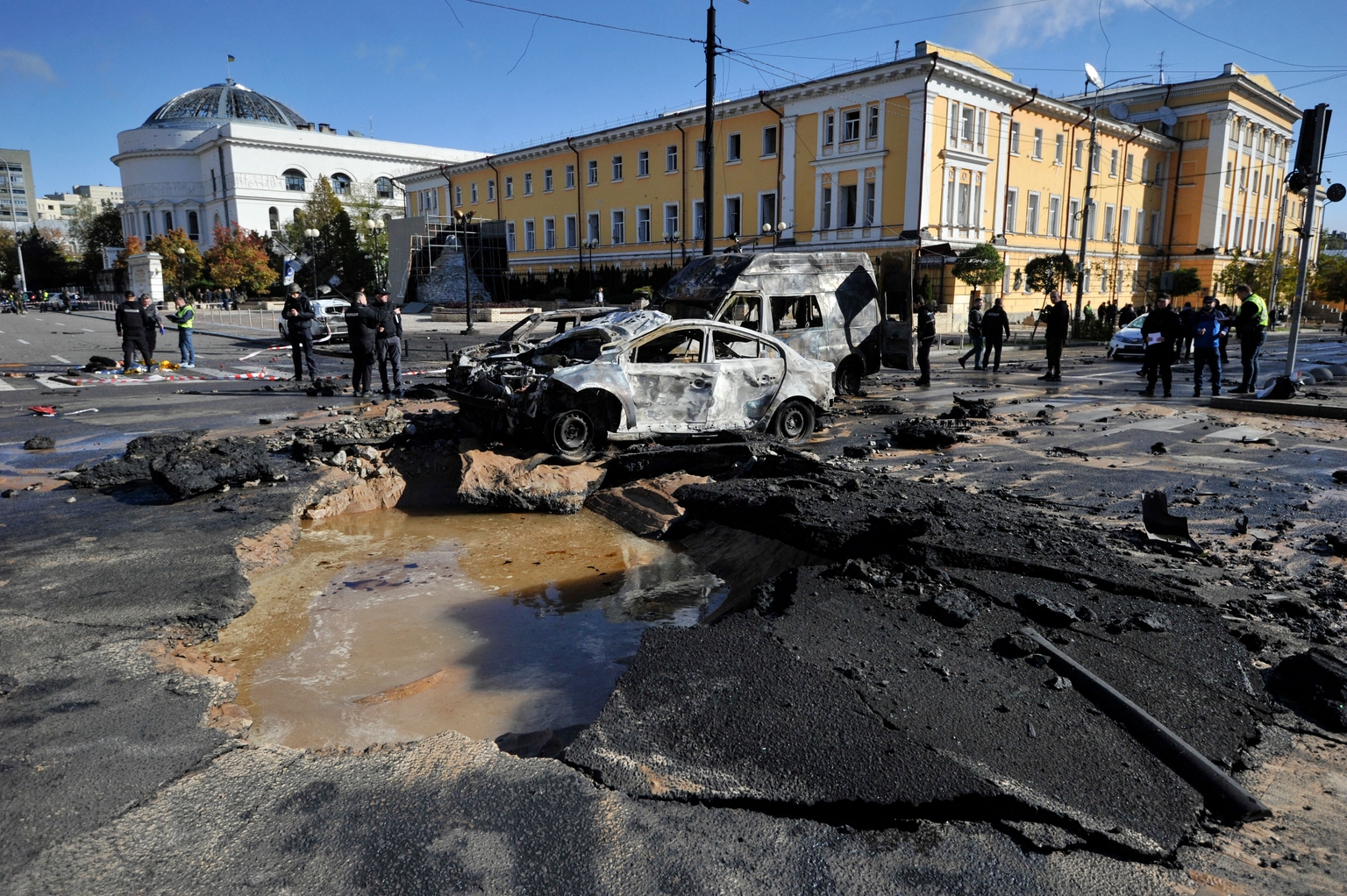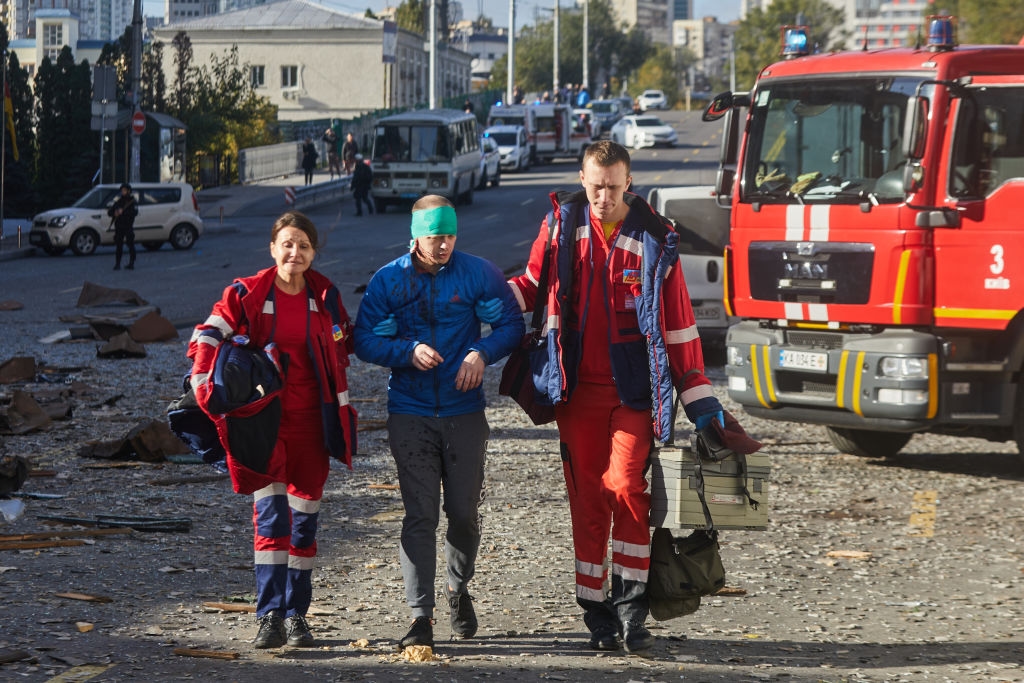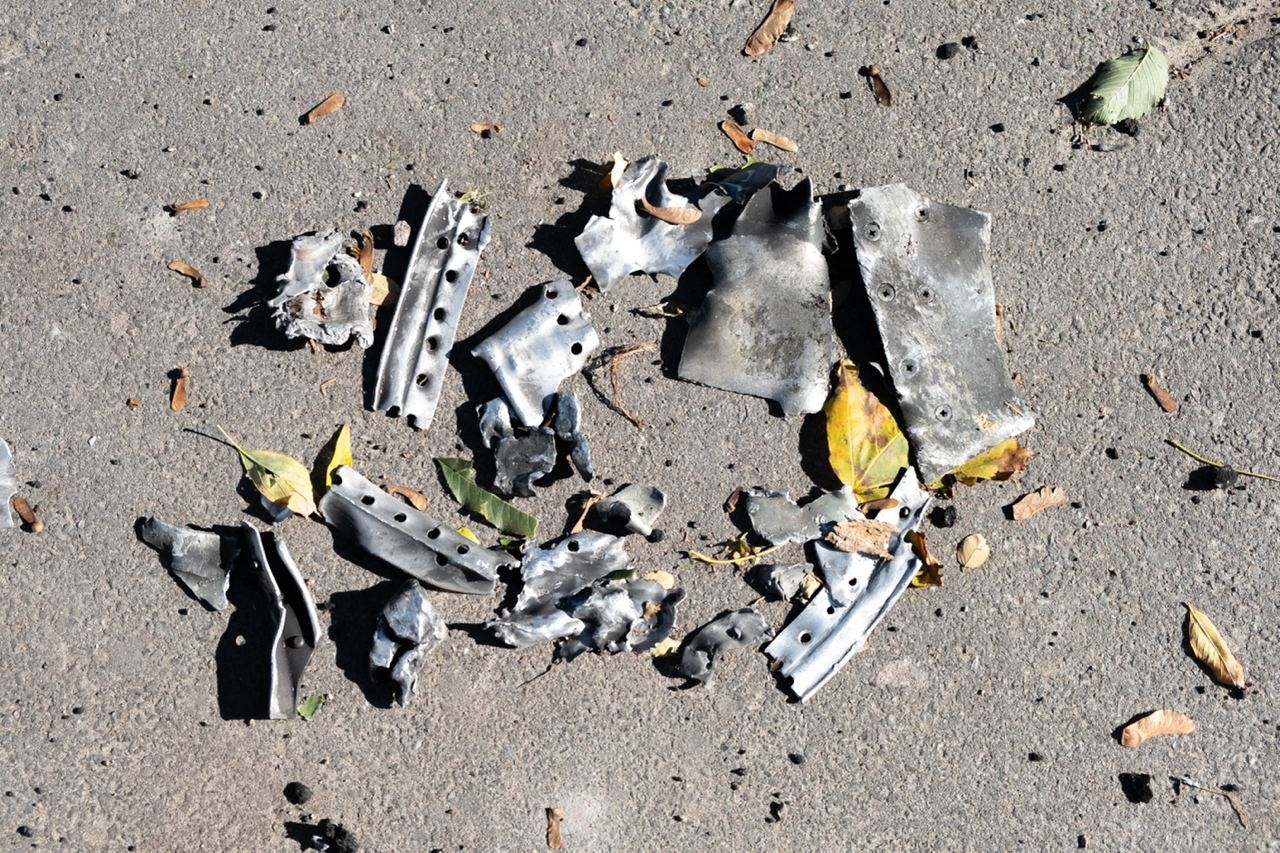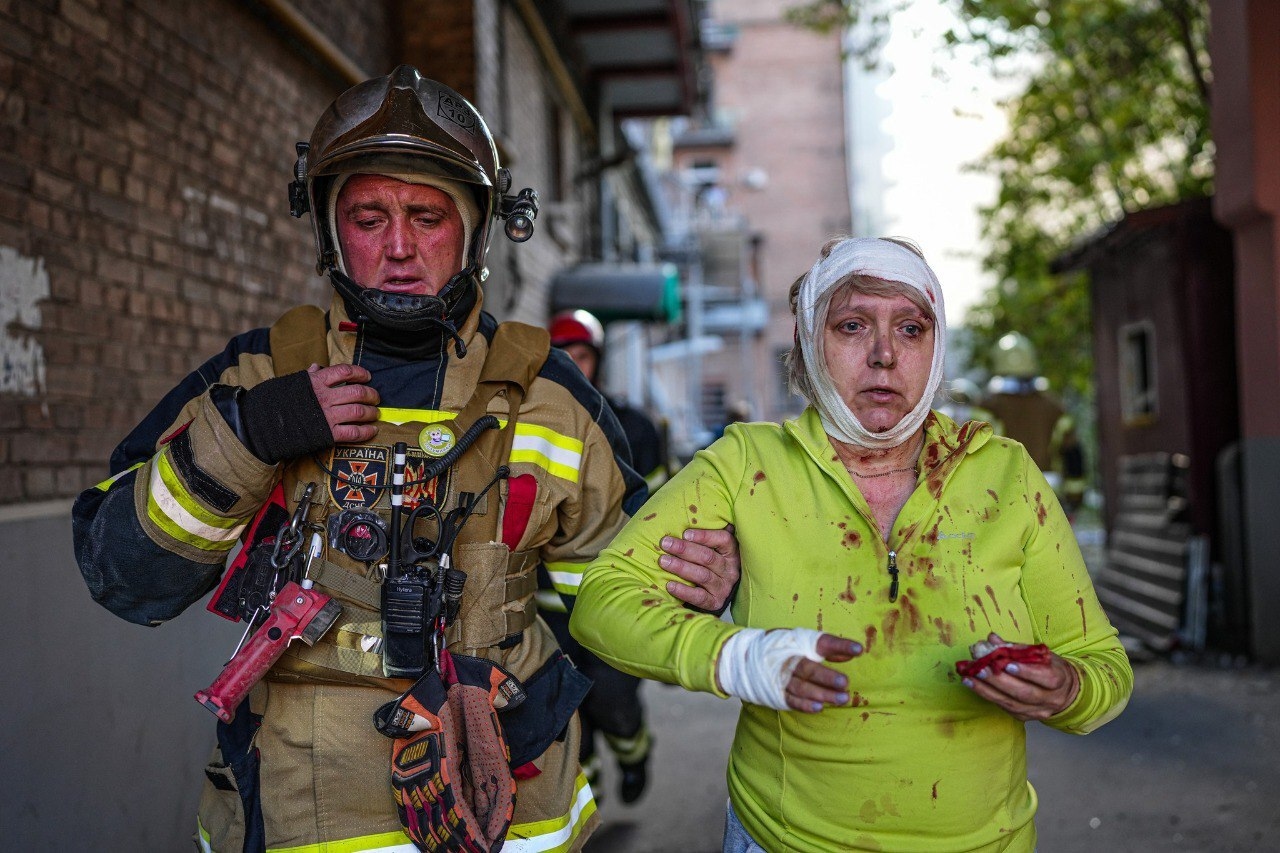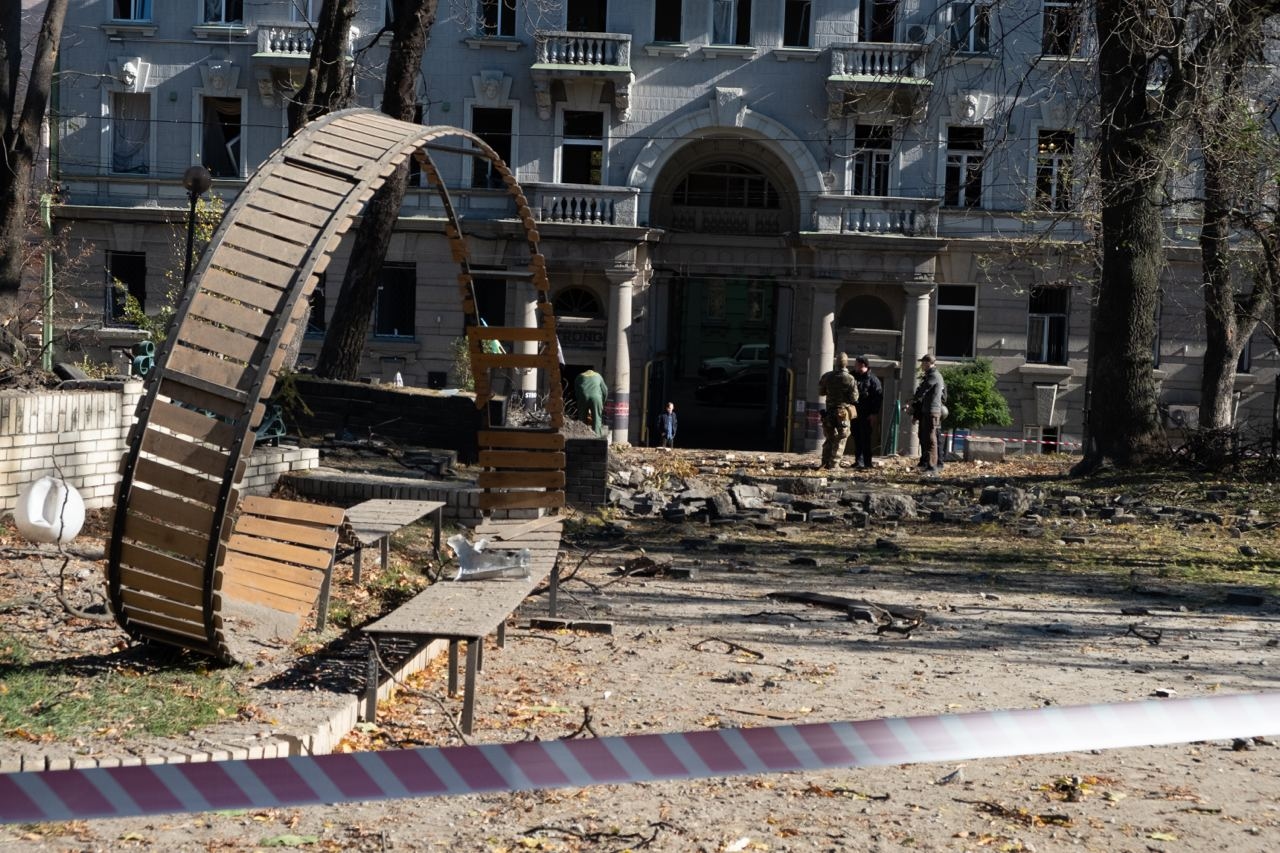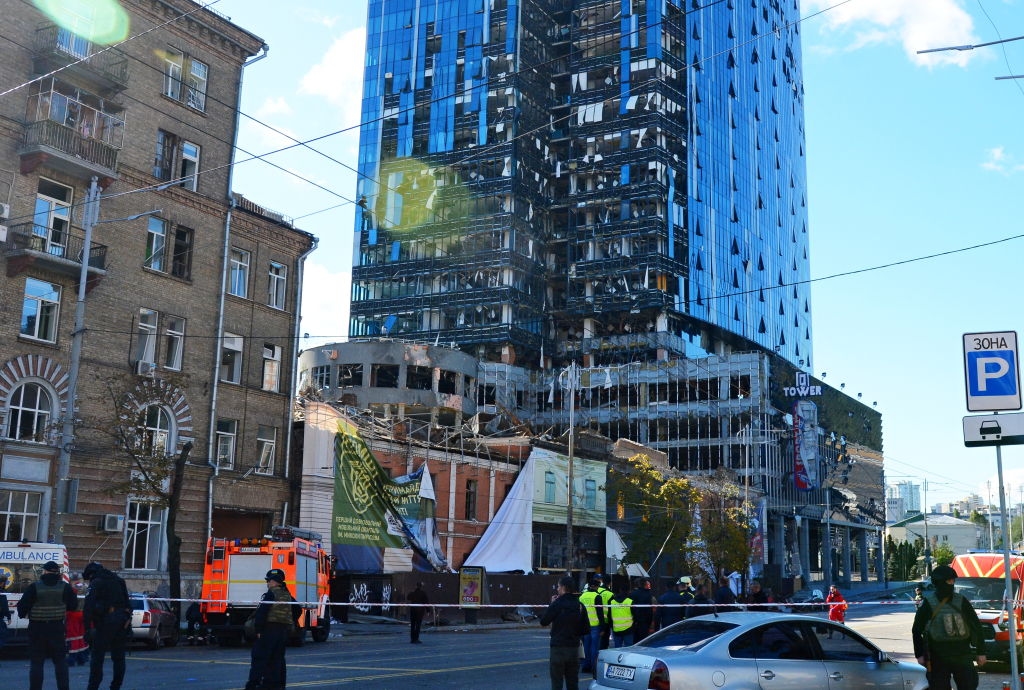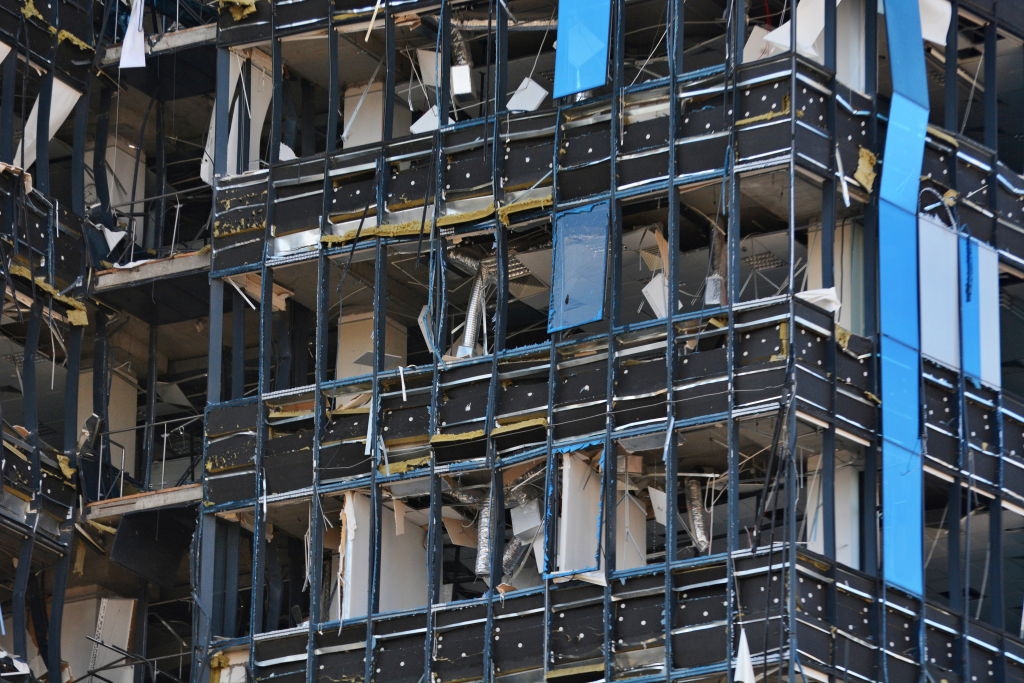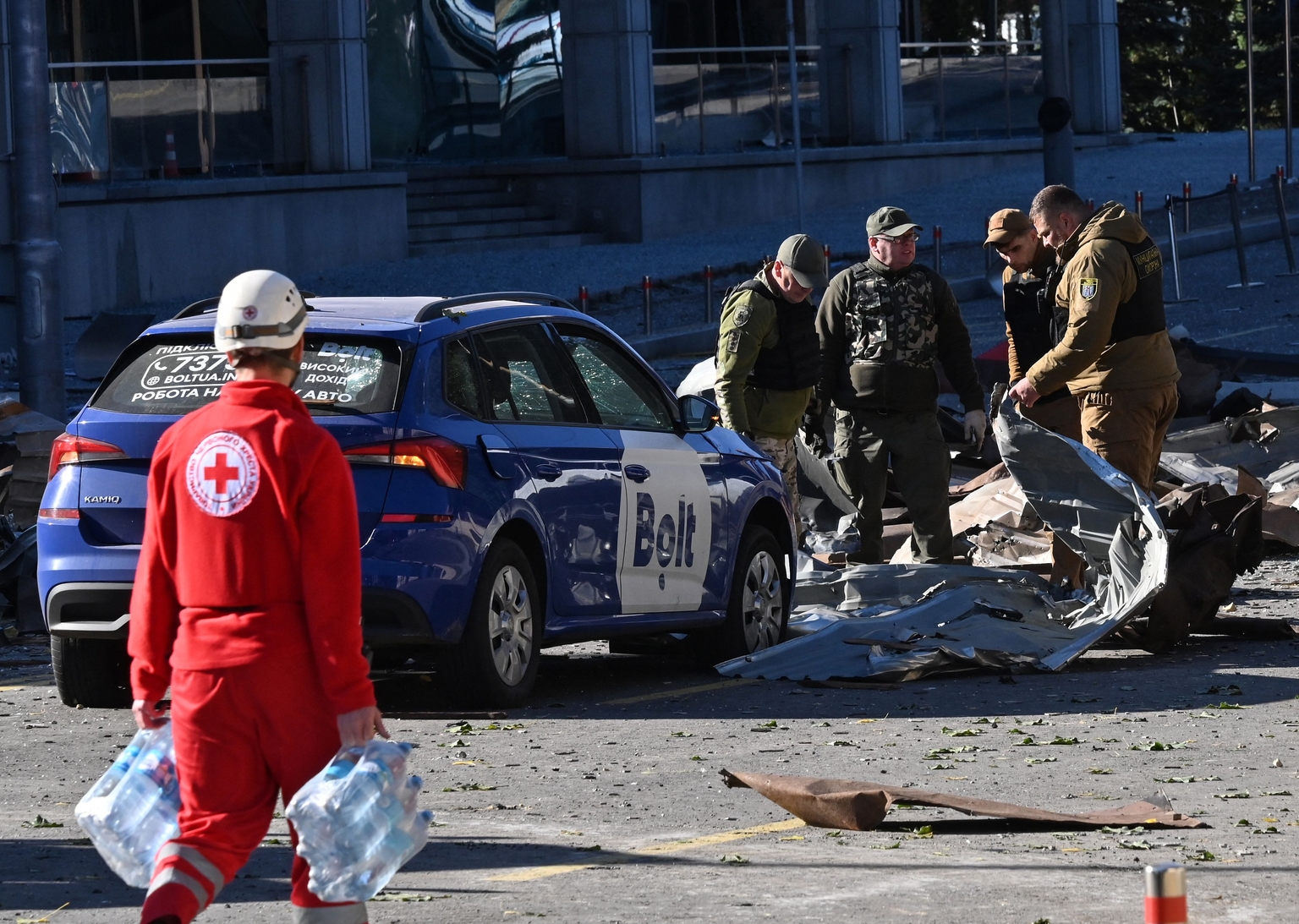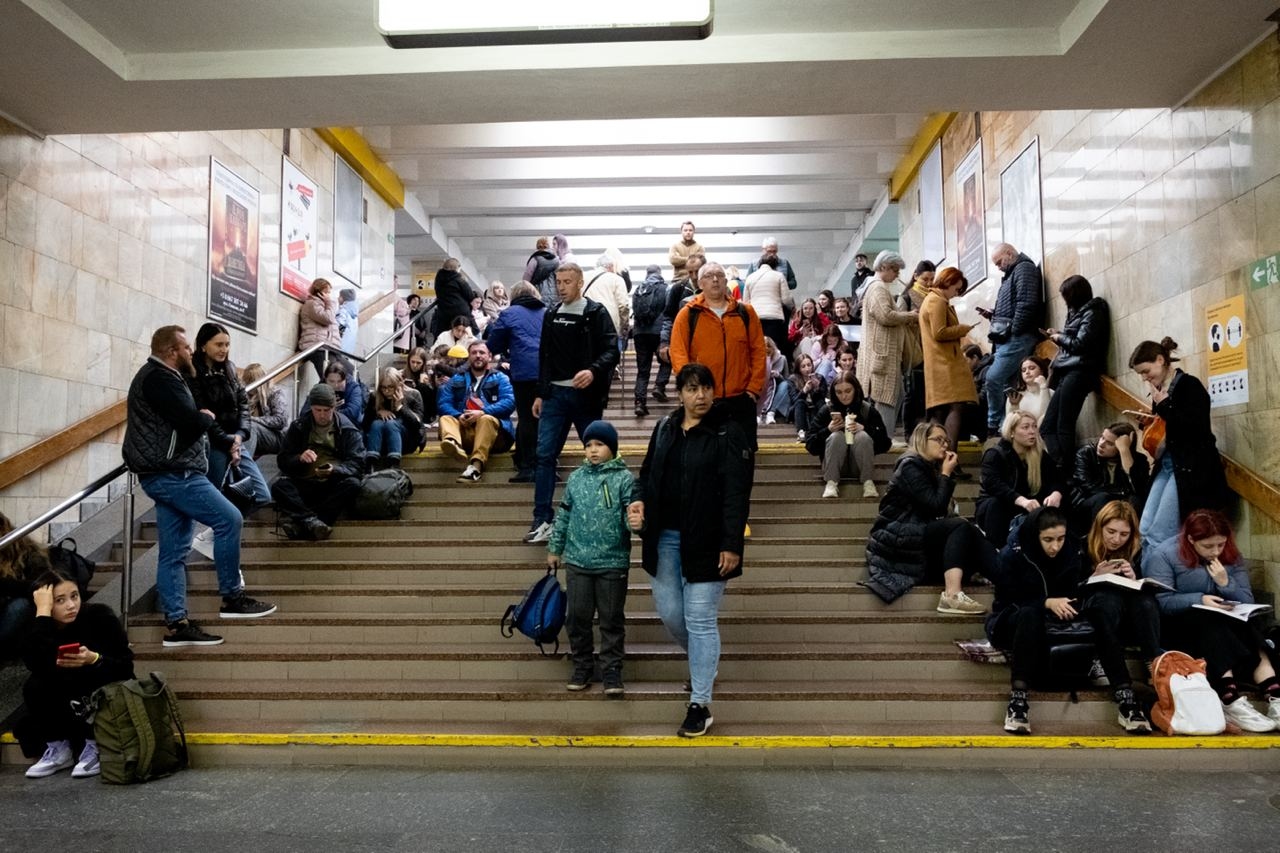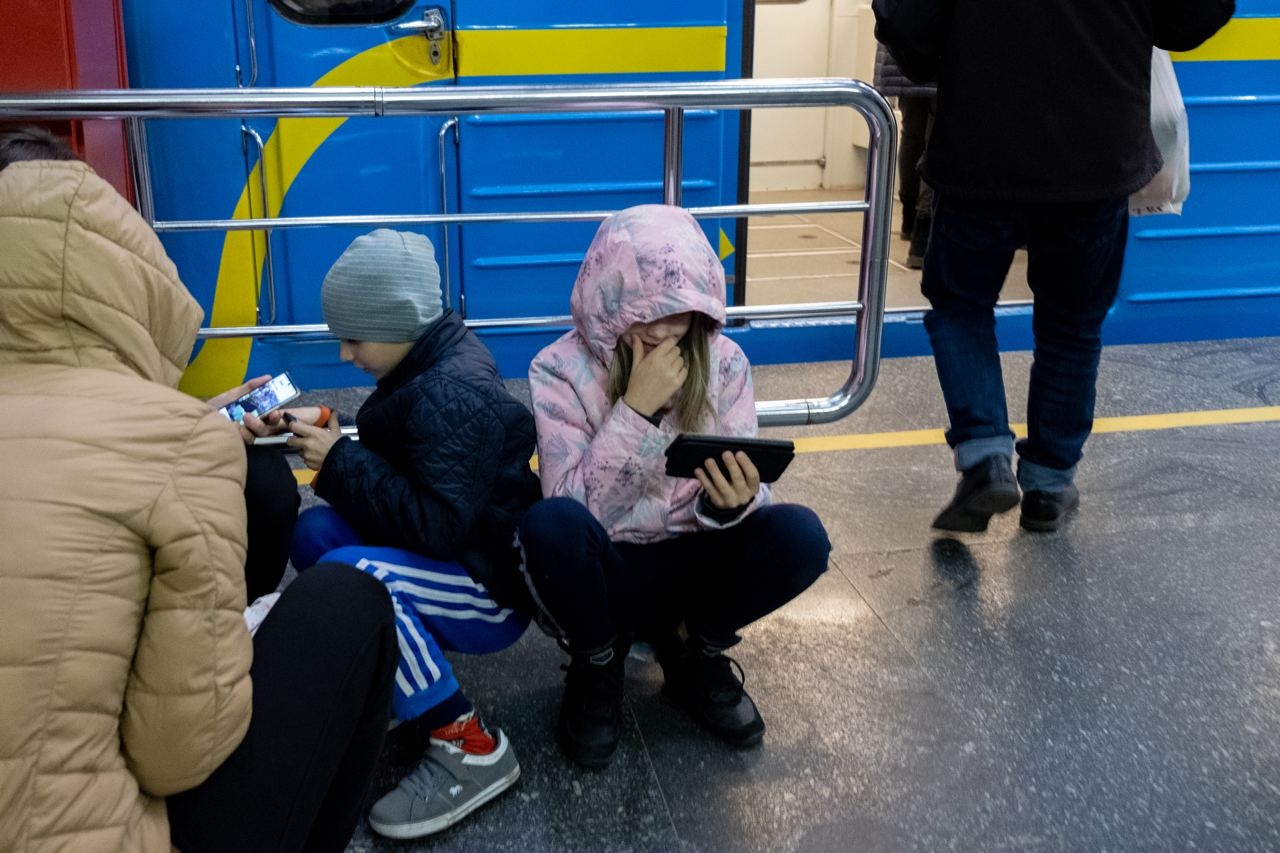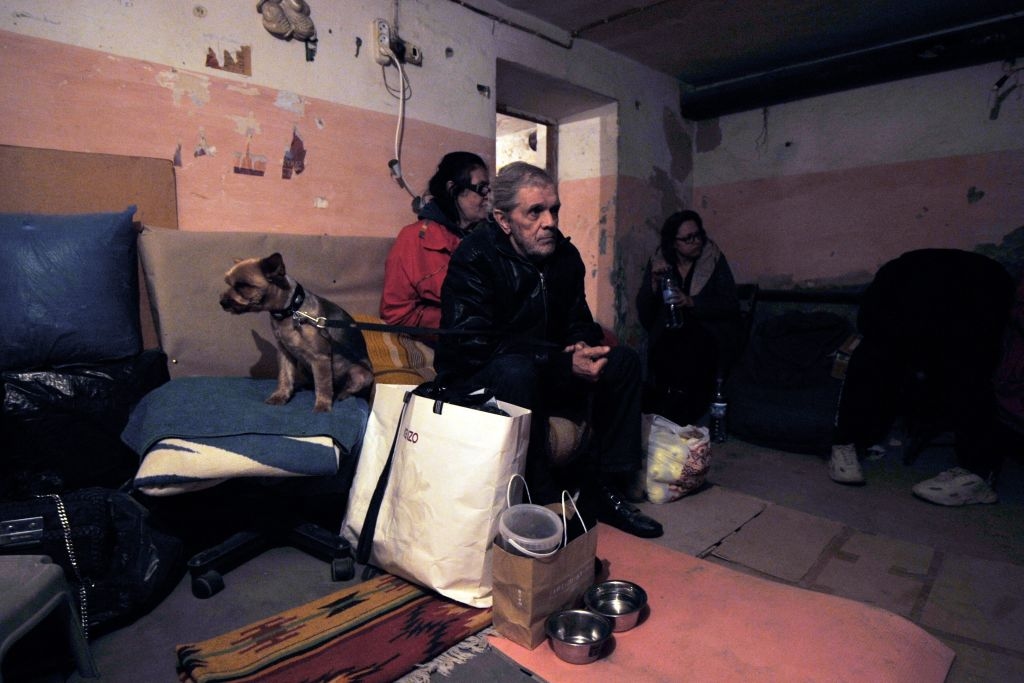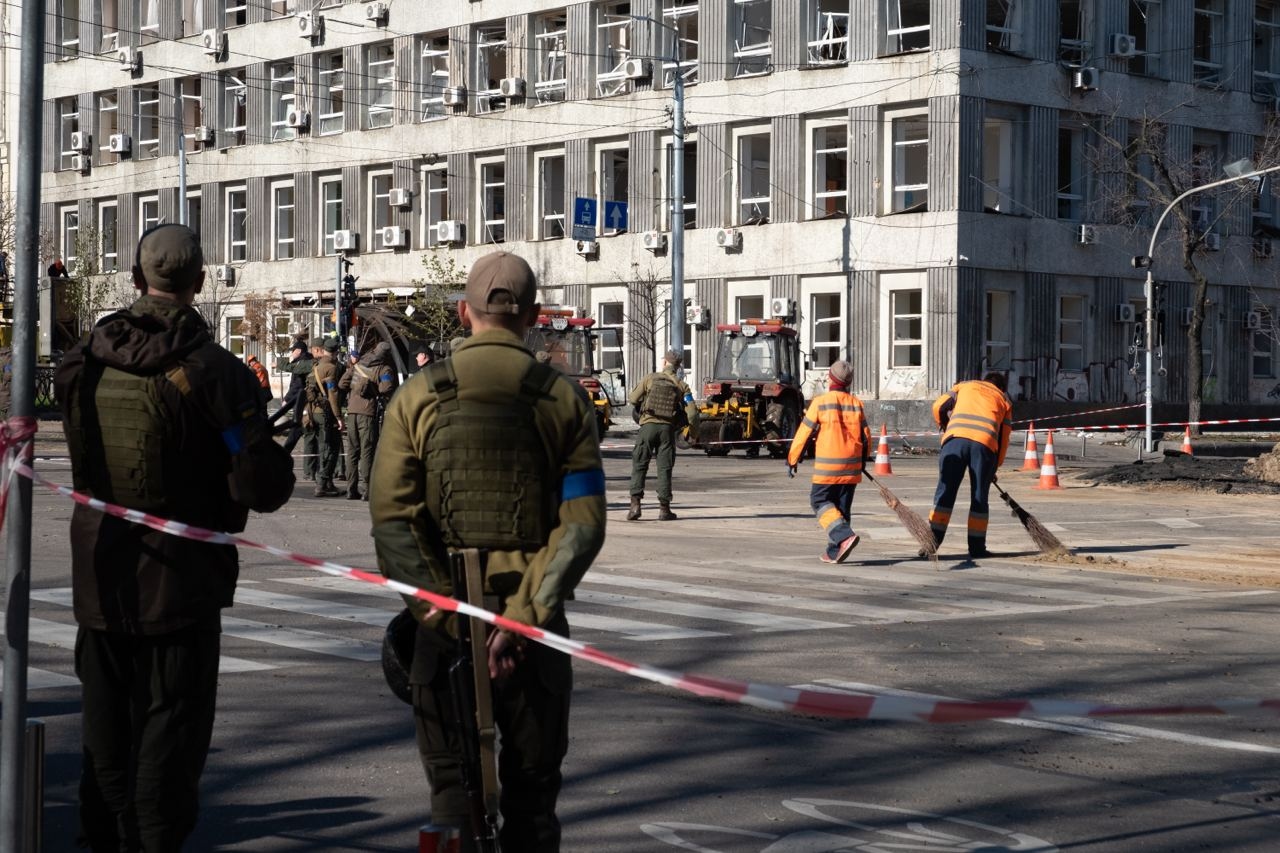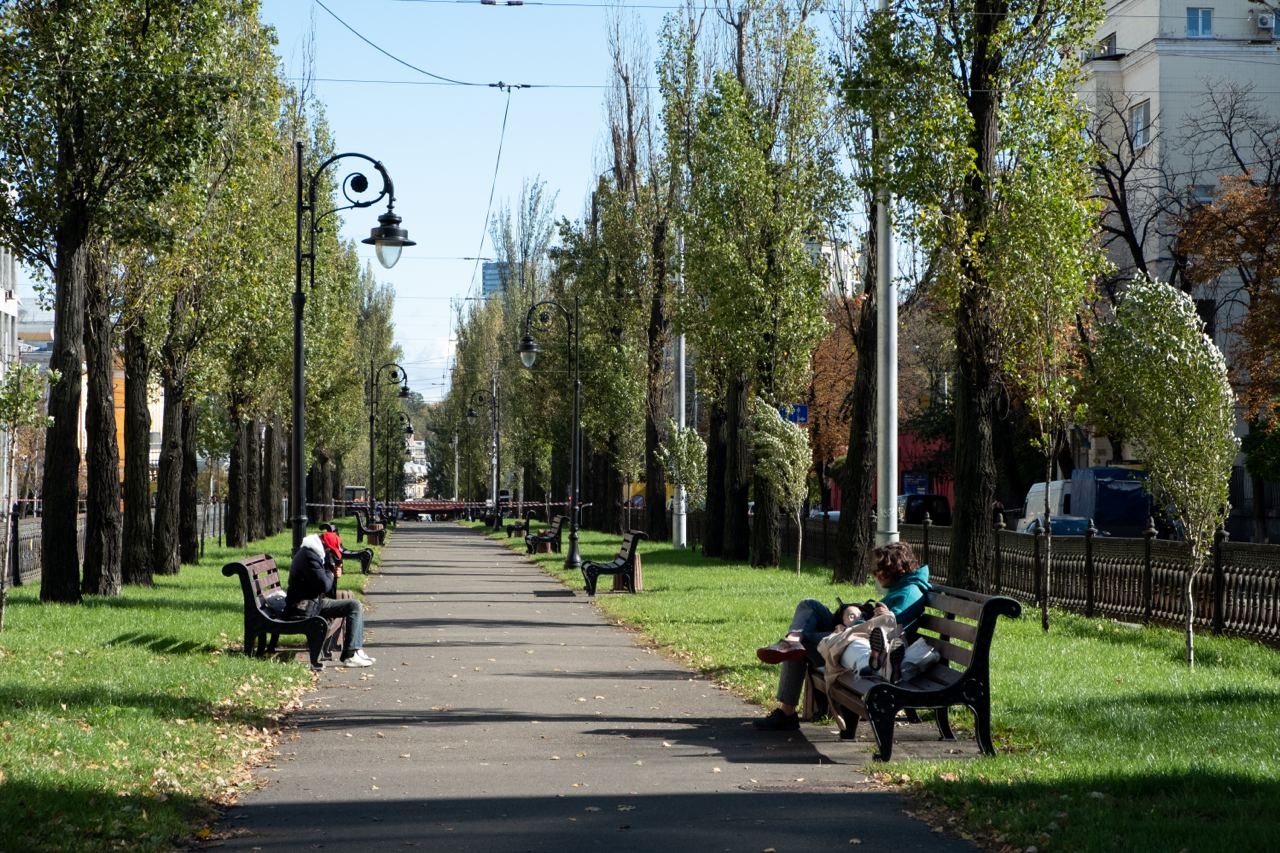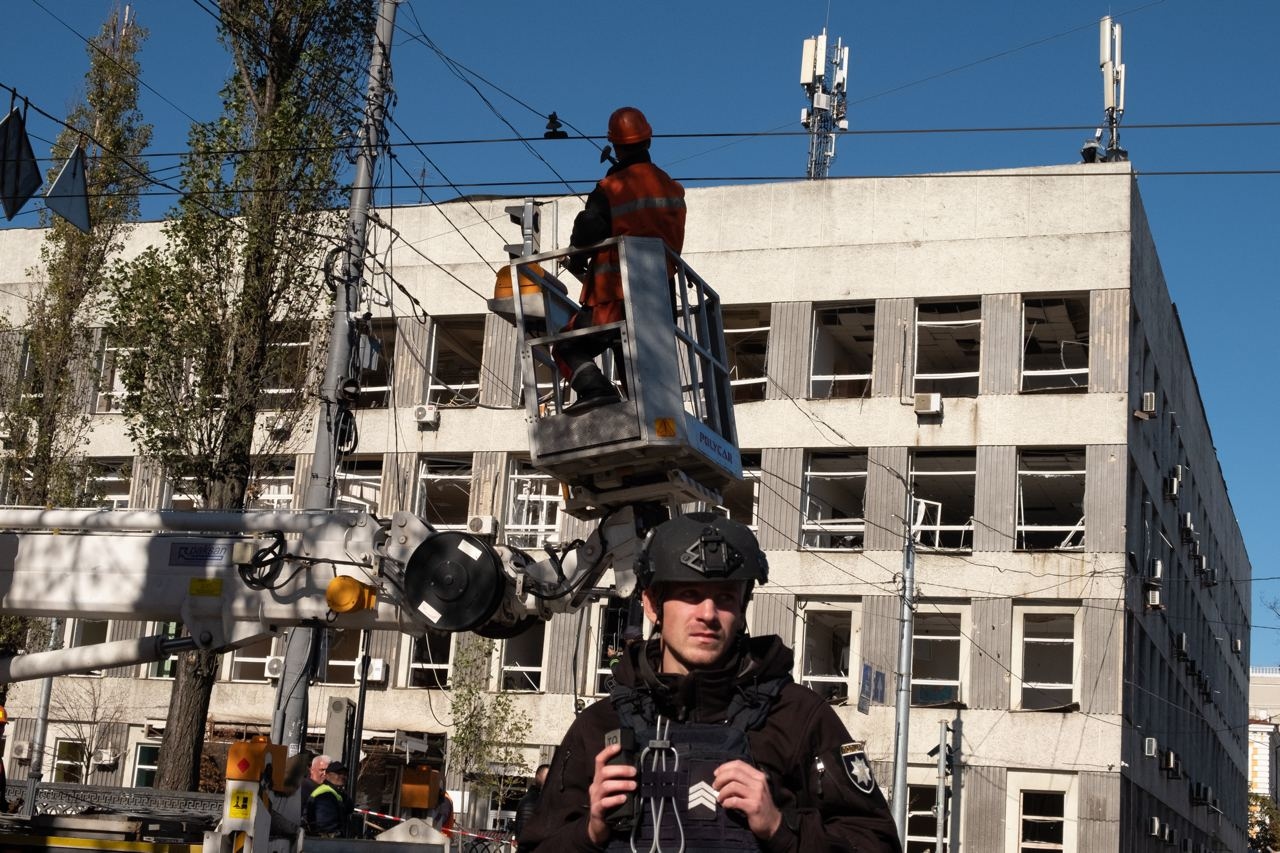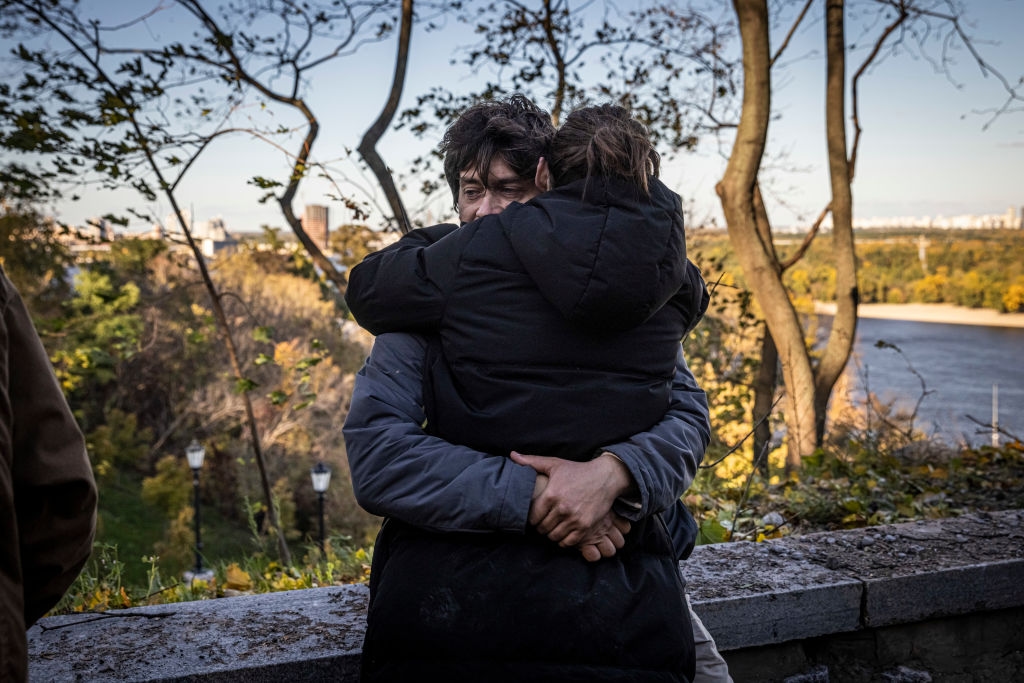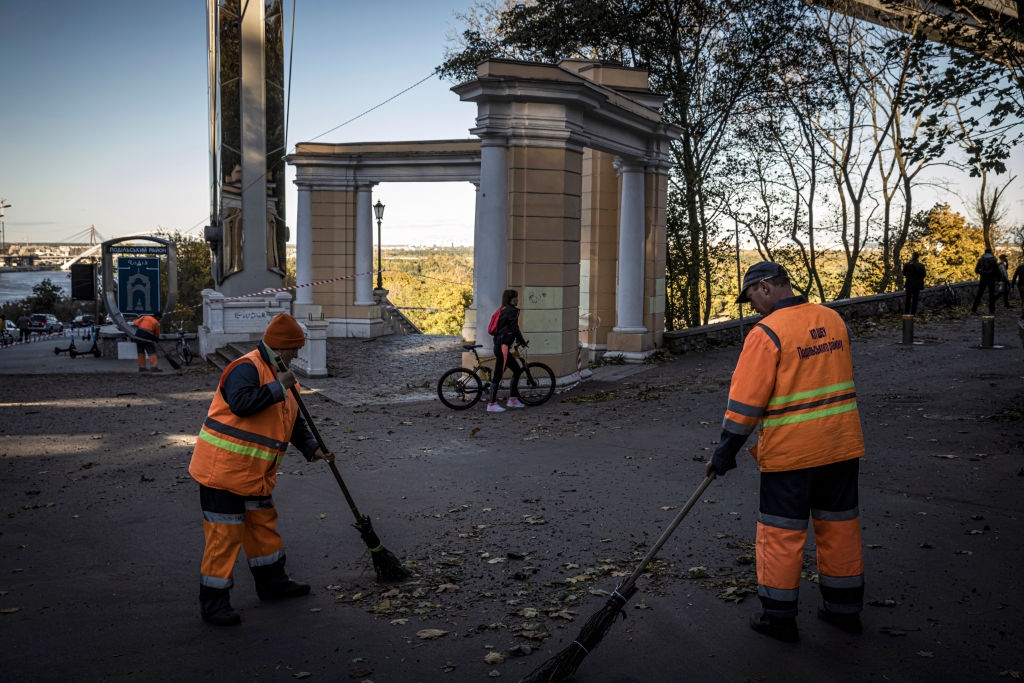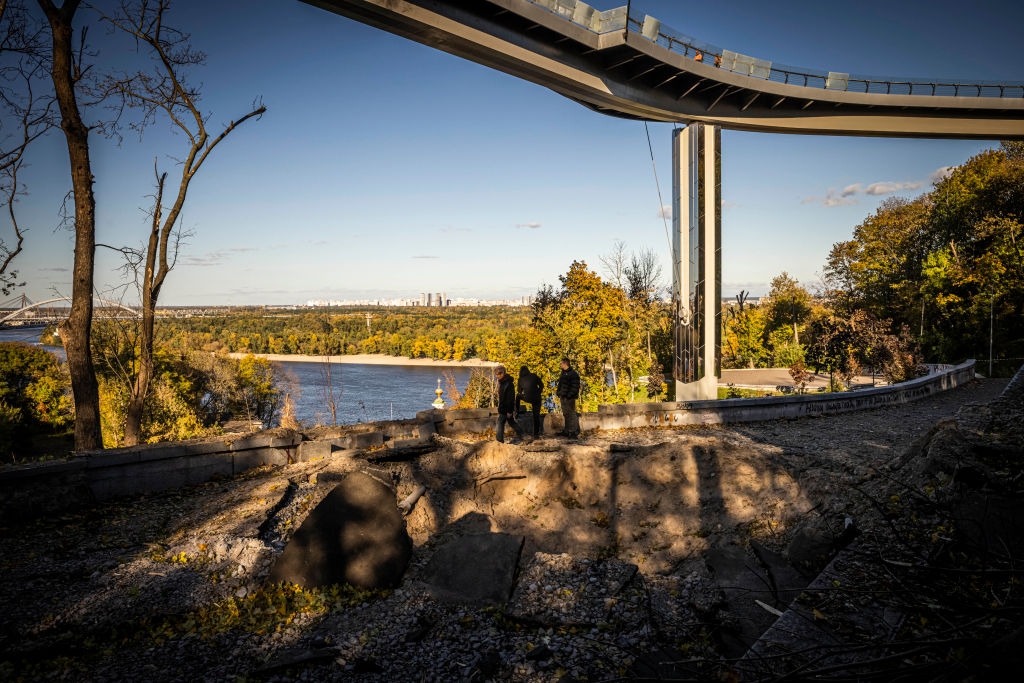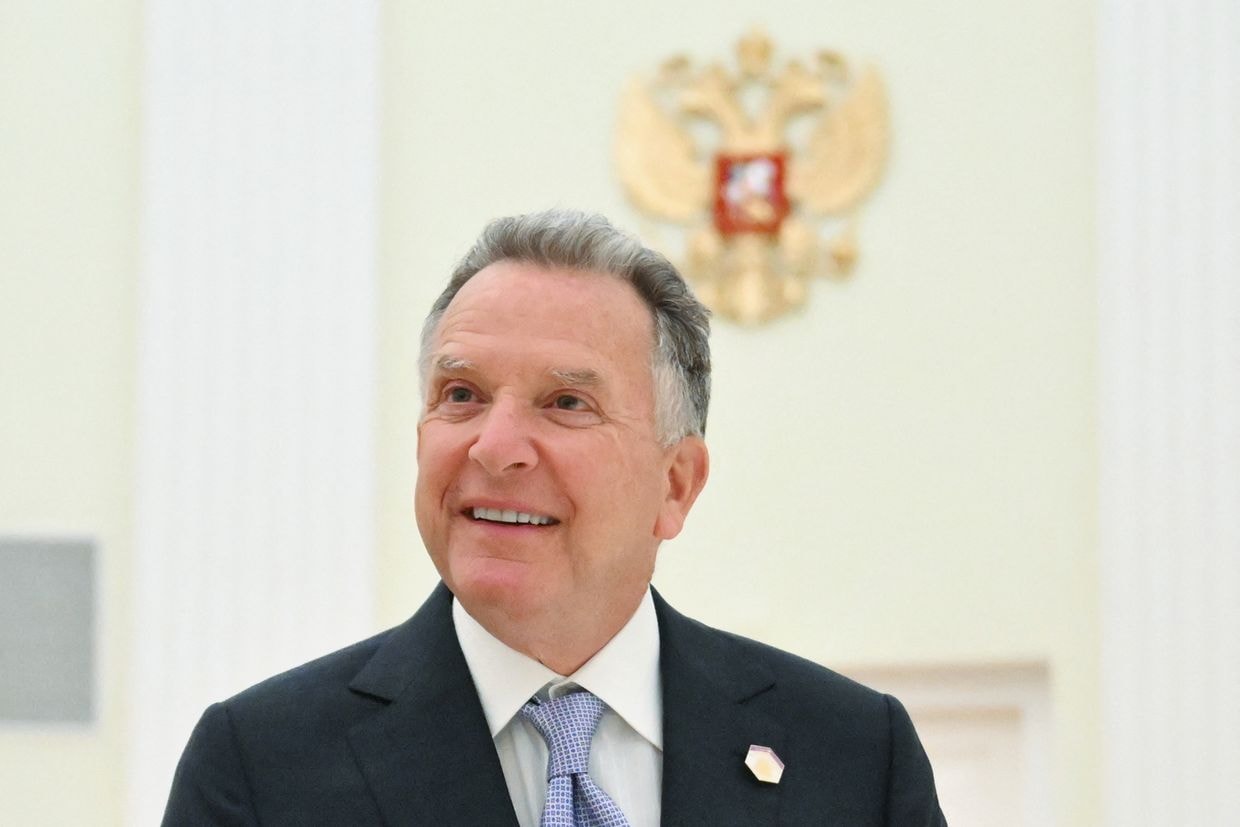KYIV — The morning of Oct. 10 in Kyiv was like no other since Russia launched its full-scale invasion of Ukraine on Feb. 24.
Starting just after 8 a.m., explosions were heard throughout Ukraine’s capital, and it was soon apparent that not all incoming missiles were being shot down by Kyiv’s usually-reliable air defense. Pictures of plumes of smoke rising from the Kyiv skyline began to flood social media. Soon, it became clear that for the very first time, Russia had targeted the very center of the city.
Images emerged of burnt-out cars in front of the famous red facade of Taras Shevchenko National University, while another video showed a missile hitting underneath the recently-built glass pedestrian bridge, both sites just a short walk from Independence Square.
Tetiana, a barista at a coffee stand on Bohdana Khmelnytskoho Street, had just started her morning shift when Shevchenko Park was hit twice.
“I heard the whistle,” she said. “There was a woman buying coffee from me; I said ‘What’s that?’ She said it’s probably an airplane. And then the blast.”
Six people have been confirmed dead as a result of the morning’s attack on Kyiv, with 50 wounded, according to Kyiv Mayor Vitalii Klitschko. While the exact numbers are not certain, some of them were killed in the strikes on Shevchenko Park, as gruesome early pictures from the scene confirmed.
“It’s like a horror film, you know that people have died nearby but can’t do anything,” Tetiana said.
“There was one little girl that was running and crying hysterically. I gave her some water. She told me the explosion happened next to her, that she couldn’t hear out of one ear.”
The attacks on Kyiv came in unison with strikes on targets all over Ukraine, in what amounted to the largest coordinated bombardment of the country since Russia’s full-scale invasion began on Feb. 24. According to the latest figures of the General Staff, a total of 84 cruise missiles and 24 kamikaze drones were launched at Ukraine on Oct. 10, of which 43 and 13 were shot down respectively.
In Kyiv Oblast and elsewhere across Ukraine, critical energy infrastructure was a particular target. For the rest of the day, with electricity grid services hard at work to restore coverage, sporadic power outages were reported across Kyiv.
Wholesale destruction
Even in the case of a missile strike ostensibly being against an energy infrastructure target, the damage to high-density civilian areas in Kyiv was extensive. Standing across the street from a combined heat and power station, the 101 Tower in central Kyiv was one such casualty. Home to energy holding DTEK as well as Samsung Ukraine’s headquarters, the skyscraper, together with a neighboring residential block, took heavy damage from a Russian missile.
The scene shows the telltale signs of a Russian strike on the city – windows blown out across the entire block, the ground littered with broken glass, walls cracked and deformed by the shockwave, and burnt-out vehicles at the epicenter.
The missile also damaged a nearby office belonging to the German Embassy in Kyiv, though the embassy itself was located elsewhere and not damaged. The power plant across the street, likely the primary target of the missile, showed some signs of damage, though its pipes and equipment appeared intact.
People at the scene were remarkably calm, reacting to the event with a cool fatalism. Some of them had expected it for a long time, taking the destruction of their property in their stride. While there were several injuries, there were no deaths there that the locals were aware of.
Yuriy, a resident of the adjacent apartment building, said he felt the shockwave of the explosion before the sound hit. “I felt a light breeze,” he said. “The window was knocked out, everything crashed. It only took a second.”
While some apartments escaped with only blown-out windows, others nearby were practically annihilated. Iryna and Natalia, residents of the same building, spoke to the Kyiv Independent while sitting together outside, processing the painfully fresh loss of their homes. “On this side, no one’s stuff survived,” Natalia said. “On the opposite side, the other apartments weren’t as damaged. But everything here was badly damaged.”
“Our toilet survived, actually,” said Iryna. “Mine too, and there was even a pickling jar that managed to stay on the kitchen shelf!” replied Natalia.
Despite the damage to his home, Yuriy does not intend to move out of his apartment. “I feel anger, and vexation. Not even hate. Just contempt,” he said. “Normal people don’t behave like this. From this, there is a simple conclusion. These aren’t people.”
No longer safe
For residents of Kyiv who had accustomed themselves to a life much resembling normalcy, Oct. 10 brought back memories of the first days of the full-scale invasion. The practices that became a rarity – like checking on friends by text, constantly scanning Telegram for new updates, and retreating to one’s corridor to put two walls between oneself and an explosion – resurfaced.
Working as per normal for months already, Kyiv’s metro stations once more became a place of shelter for many. As a second air raid siren rang out in the city later in the afternoon, hundreds shuffled downstairs into Kontraktova Square station, refusing to take their chances.
The experience of February and March meant that people arrived prepared, with foam mats, blankets, tea, and entertainment for the shelter’s younger occupants. In some stations, videos were filmed of residents singing patriotic folk songs together underground as they waited for the all-clear signal.
The first explosions in Kyiv didn’t initially wake restaurant worker and Kyiv resident Dmytro Yuryk, who now sheltered on the metro platform. “My friends were phoning me constantly in the morning,” he said. “I thought they were exaggerating the risk at first, but when I saw the first photos, I understood I had to come here.”
It remains to be seen how often Kyiv will be targeted in the coming days at this new level of escalation. But it appears that after months of neglect, many residents will take the air raid alarms much more seriously.
“I will be coming down here tomorrow, for sure,” said Yuryk. “I really don’t want to, I want to be able to work and live a normal life, but if the time comes I will stay safe.”
Escalation of weakness
Later in the afternoon of Oct. 10, Russian dictator Vladimir Putin briefed the nation on the coordinated missile attack on Ukraine. “In the case of continued attempts to conduct terrorist attacks on our territory, Russia’s reaction will be harsh and appropriate to the threat it faces.”
Putin’s comments are unanimously understood to refer to the Oct. 8 explosion on the illegally constructed Crimean Bridge, the personal project of the dictator connecting Russia to occupied Crimea. Putin accused Ukraine and its security services of the attack, while Ukraine hasn’t officially commented on its involvement.
As with many Ukrainians, Yuryk was expecting some kind of reaction from the Russian side to the explosion on the bridge. “The first, immediate reaction [to the bridge attack] was euphoria, but the second was the anticipation of retaliation,” he said.
“Many of my friends were thinking of a nuclear attack, or at least of an escalation like this. I didn’t want to imagine it, but on the periphery of my thoughts, I was expecting today to happen.”
However, according to Ukraine’s defense intelligence agency HUR, Russia’s attack on energy infrastructure was not a response to the Crimean Bridge attack and had been planned since the beginning of October. According to the agency’s brief, “the central neighborhoods of highly-populated cities” were a designated primary target together with the energy infrastructure.
Analysts and experts in the West have argued that the strikes on Kyiv were an act of appeasement to hawkish political and public figures in Russia, who have long called for a more extensive bombing campaign against Ukrainian cities, especially Kyiv.
Putin aims “to signal that Russia is ready to throw whatever it still has at Ukraine,” US-based political analyst András Tóth-Czifra wrote on Twitter. Having threatened back in July that “we haven’t started anything in earnest yet”, Putin had been criticized in the past for failing to escalate.
Though the damage to Ukraine’s energy infrastructure will take time to repair, the attacks will have little to no effect on the situation on the front line, which remains dire for Russia.
“As long as Ukraine continues to have the upper hand on the battlefield,” Tóth-Czifra tweeted, “enough for Russian elites and the population to consider the possibility of defeat increasingly seriously, these strikes will not even change the regime's domestic threat landscape.”
Nonetheless, while Oct. 10 was a truly extraordinary morning for the residents of Kyiv, the events of the day were also very much an ordinary occurrence in Ukraine. Within hours of the attacks, civilian city maintenance crews had cleared the street around Shevchenko Park of the burnt-out vehicles and other debris. Locals walked their dogs, went for coffee, and lay down on benches just fifty meters from the impact crater.
If the aim is to terrify Ukraine into submission, the resolve of Kyiv residents shows no sign of budging.
“They’re hitting innocent civilians, cities, and infrastructure,” Iryna said. “They’re trying to frighten us. But we’re not afraid.”
Note from the author:
Hi, I'm Francis Farrell, who wrote this piece from Kyiv on a day that took us at the Kyiv Independent back to memories of the early days of Russia’s all-out war – explosions, clouds of smoke, and bomb shelters. Russia is trying to scare Ukraine into submission, but it has no chance of working. Please consider continuing to support our reporting.



